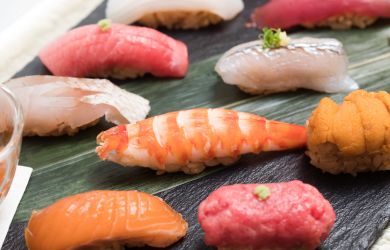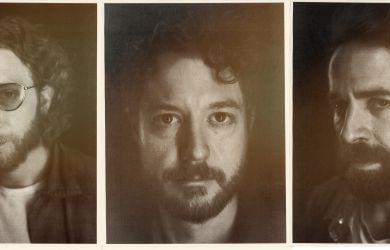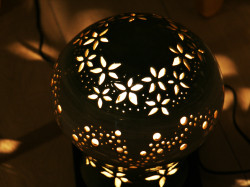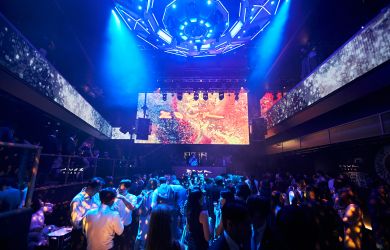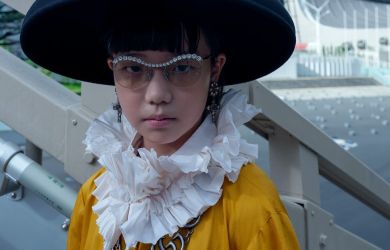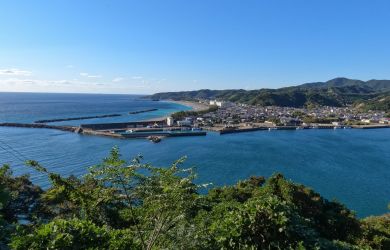
August 11, 2005
City of Peace
Sixty years after the infamous attack, Hiroshima is a site of remembrance
By Metropolis
Originally published on metropolis.co.jp on August 2005

There are things we put off: things that are difficult to tackle, troublesome, or unsavory. For 15 years since first coming to Japan, I have put off visiting Hiroshima.
Having seen other examples of the terrors of war—Ho Chi Minh’s War Remnants Museum (in those days less ambiguously named the American War Atrocities Museum), for example—I decided Hiroshima could wait.
This year, however, marks the 60th anniversary of the bombing, a suitable time, I thought, to stop putting it off and confront the world’s most damning testimony against nuclear warfare.
For two days I roamed the city’s broad boulevards and narrow alleyways, crossing the many bridges that link several islands formed by rivers snaking through the city’s heart—a striking geographical feature that helped seal Hiroshima’s fate.
For the most part, Hiroshima today is a succinct example of how Japan rose from the ashes of war and rebuilt itself to become the economic power it is today. There’s a bustling business zone, ubiquitous nighttime neon and a bubbly soapland district. Red-faced business-folk tumble out of eateries serving okonomiyaki, the savory pancake that locals will tell you is Hiroshima’s contribution to world cuisine, while a few hundred die-hard fans cheer on the local baseball team, the Hiroshima Carp, doing overtime battle with the
Yokohama Bay Stars.
Yet, there are ample reminders of that tragic morning in 1945 when the Enola Gay off-loaded the “Little Boy” bomb and blew what was then a little-known provincial city straight onto the map of global consciousness.

At the entranceway to Fukuro-machi Elementary School, which was recently turned into a museum, an enlarged panoramic photo—the first to be snapped after the bombing—reveals the scale of the destruction.
The city, quite simply, is desolate.
Inside the school, messages penned on the stairwell by desperate survivors appealing for information about missing relatives are testimony to the anguish they suffered. The authors have been traced, and their heart-wrenching stories imaginatively documented.
Across the river, at the city’s main museum, there are copious more reminders of individual tragedies: charred lunchboxes, ripped school uniforms, melted bottles, a step from the entrance of the Bank of Japan, blackened where a vaporized blast victim had been sitting. There’s nothing on the shock scale of Ho Chi Minh’s museum here—no pickled Agent Orange specimen or images of torture and execution—but enough to turn stomachs of those not yet desensitized by “Nuke the f***ers”-style Hollywood flicks or Al Jazeera-style churn-alism.
From the second floor, a long glass-fronted corridor affords a panoramic view across the city’s Peace Park and the nearby cenotaph. Under this memorial—a graceful arc of granite that frames the nearby Peace Flame—a chamber houses tomes listing the names of the 230,000-plus victims, many of whom died from radiation-related illnesses.
Here I chat at length with Yuriko Anno, 79, who visits weekly from Ninoshima, a nearby island where thousands of hibakusha, as the A-bomb victims are known, are buried, to pray for relatives and friends who perished.
Anno survived because she was transporting family belongings to a new home some 30km away when the bomb was detonated. Like many of Hiroshima’s peace proponents, she expresses bitterness over Japan’s continued endeavors in nuclear power development and recent conflicts in which her country has been involved as “peacekeepers.”
“Someone once said, ‘The only thing we have learned from history is that we never learn from history,’” she remarks. “Anyone who believes in war as a solution to anything should come right here.”
By now we have meandered through the Peace Park, past the Flame of Peace and the Children’s Peace Monument, where a group of school kids are solemnly chanting prayer and draping countless rows of colorful paper cranes in deference to Hiroshima’s most famous child, Sadako Sasaki—the leukemia victim of “1,000 Cranes” fame.
We come to a halt by the Hiroshima Prefectural Industrial Promotion Hall, which under rather different circumstances would likely have been replaced by a searing shiny structure housing collars and ties. Yet this is the original Ground Zero, now a World Heritage Site and the symbol for which the city is known worldwide. More commonly known as the A-Bomb Dome, it is the only remaining physical evidence of the attack. Its burnt and mangled shell serves as a chilling reminder of the A-bomb’s destructive force.
As Anno continues her tale—of how her sister was killed instantly in the grounds of her school—I try to imagine the sight of a 1 million Centigrade force capable of buckling a meter-think iron girder, of wiping out an entire city in a micro-second or imprinting a human shadow on stone. I can’t. So I turn to the only item of comfort at hand, face the music and press the shutter.
Shinkansen trains connect Tokyo station and Hiroshima (4.5hrs, ¥18,550 one-way), while overnight buses leave from Tokyo Station’s Yaesu south exit (12hrs, ¥21,200 round-trip). Hiroshima’s sites are easily negotiable by foot, but the city’s tram system connects the main JR station with the city center and beyond. Hotel 28 Hiroshima (082-247-2811) is a centrally located, functional business hotel. At ¥4,000 for a small single room, this is possibly the city’s most reasonable offering. For something more upmarket, the ANA Hotel Hiroshima (082-241-1111) offers twin rooms for ¥20,000. Some guidebooks recommend the World Friendship Center (082-503-3191), run by an anti-nuclear NPO (¥3,500/p including breakfast). The Hiroshima City Hotel and Ryokan Union can be contacted at 082-261- 0074. There are two city information desks at the JR Station and another excellent facility at the Rest House inside the Peace Park (082-247-6738). The Hiroshima Convention and Visitors Bureau: www.hiroshima-navi.or.jp The Hiroshima Interpreter and Guide Association at www.urban.ne.jp/home/higa.
[geo_mashup_map]
